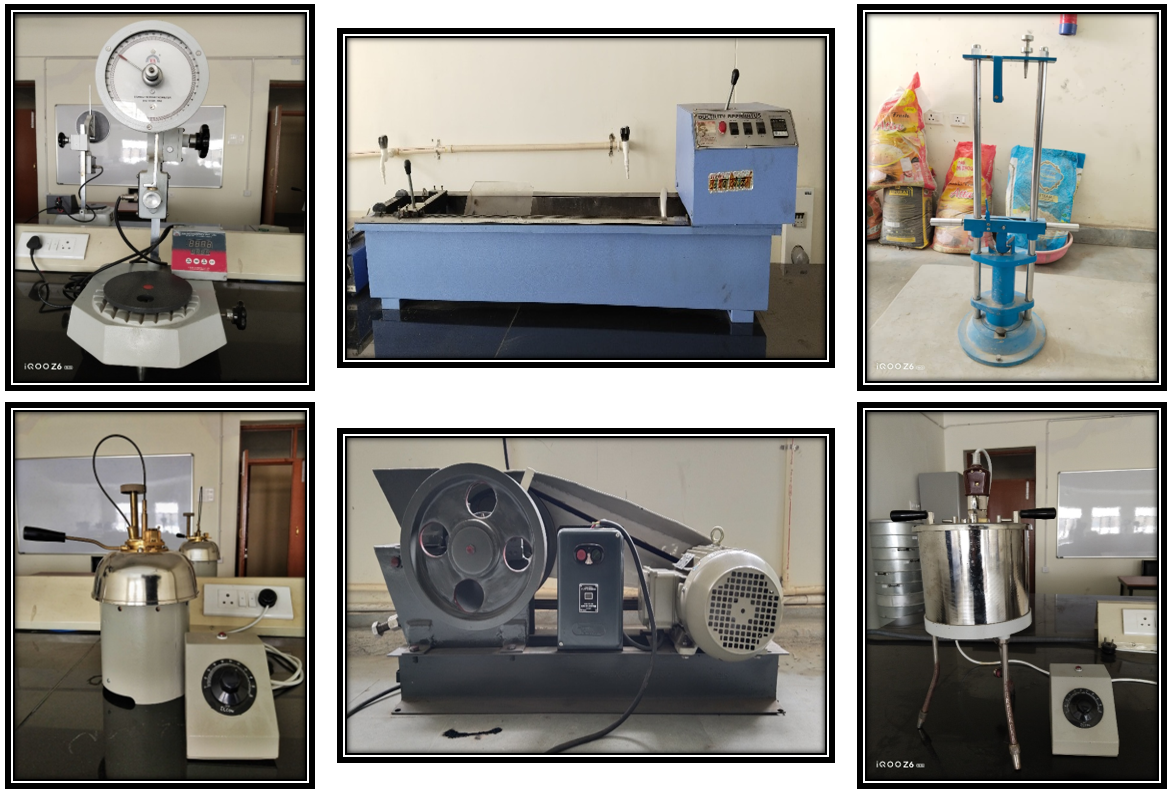Transportation Engineering Lab
Welcome to the Transportation Engineering Laboratory!
Our Transportation Engineering Lab is designed to provide students and researchers with hands-on experience in testing and evaluating materials and methods used in transportation infrastructure. The lab focuses on the analysis, design, and quality assessment of highways, pavements, and traffic systems to ensure efficient and sustainable transportation solutions. Equipped with advanced testing instruments, the lab aids in understanding the properties of pavement materials and traffic flow characteristics.
Prof. In-Charge
Mr. Abhishek Kumar (Assistant Professor)

Laboratory Infrastructure
- Objectives:
- To conduct tests on pavement materials such as bitumen, aggregates, and asphalt mixes.
- To determine the mechanical properties of materials such as strength, hardness, and durability.
- To evaluate traffic flow characteristics and road safety measures.
- To study pavement design, performance, and maintenance techniques.
- Key Equipment & Tests:
- Aggregate Crushing Value Test: Determines the resistance of aggregates to crushing under a compressive load.
- Aggregate Impact Value Test: Measures the toughness of aggregates against sudden impact.
- Los Angeles Abrasion Test: Evaluates the hardness and wear resistance of aggregates.
- Penetration Test of Bitumen: Measures the consistency and hardness of bitumen.
- Ductility Test of Bitumen: Determines the extent to which bitumen can be stretched before breaking.
- Applications:
- Quality control of materials used in road construction.
- Design and evaluation of pavements for long-term performance.
- Research and development in sustainable transportation materials.
List of Experiments
- To determine the moisture content in aggregates by oven drying method.
- To determine the specific gravity of given aggregates
- To determine the aggregate impact value of the given specimen
- To determine the aggregate crushing value of the given specimen
- To determine the combined flakiness and elongation Index of the given coarse aggregate sample
- To determine the abrasion value of coarse aggregate by using Los Angles machine
- To determine the ductility value of the given bitumen
- To determine the penetration value of the given bitumen

